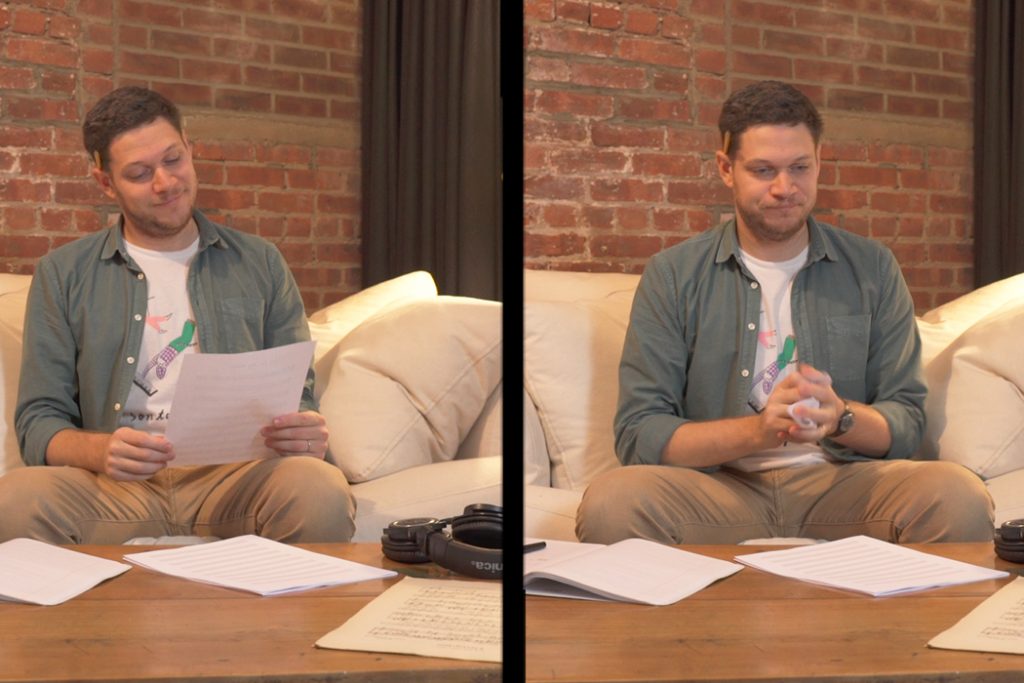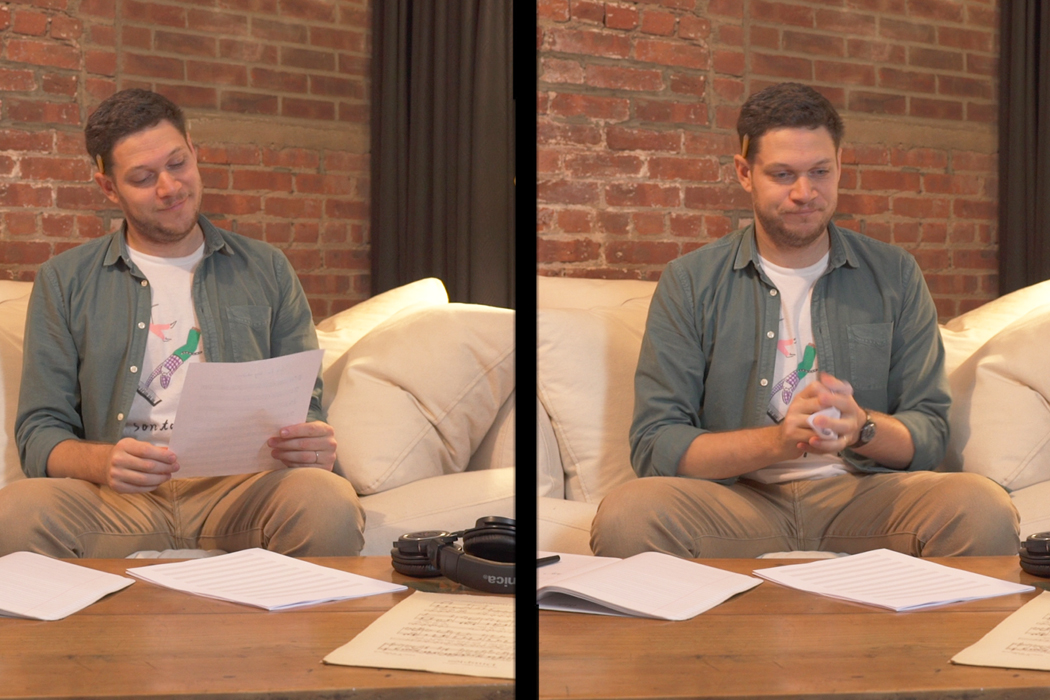
Every songwriter knows that painful moment: Staring at a blank page, unsure of what to write. But I believe it’s much worse to stare at a half-finished song. You desperately try to think of what to do next, yet still feel locked into the style, chords, and rhythms that you have already established. It can seem hopeless at times to continue a piece like this, but there is always a way out. Today I’d like to show how changing an arrangement can breathe new life into a dead tune.
To keep things simple, I’m going to be working with a basic 8-measure melody that I wrote back in college. It’s a piano ballad that focuses on moving the chords down by a step each measure. To my ear, this chord progression provides a soulful backdrop for what is a very simple melody:
(If you are unable to view the SoundCloud links embedded below, check out Peter’s SoundCloud page here and listen to each version of the melody!).
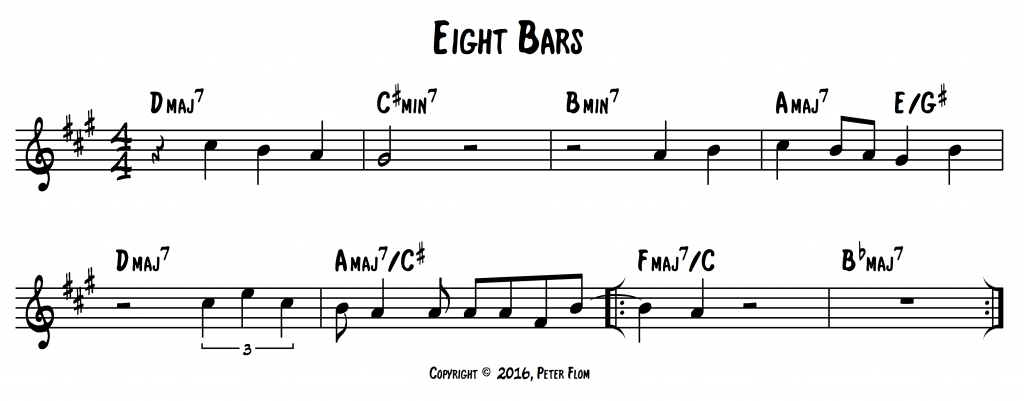
I was pretty excited about this melody, but I could never quite figure out what to do with it. Over five years later, it still has not flourished into a full piece! Many, many musicians have pieces like this — proud beginnings that never seemed to inspire their way to completion. In fact, the great George Gershwin filled huge notebooks (or “iceboxes” as he called them) with literal pounds of untapped potential.
I know I want to make something out of this piece, but it doesn’t seem obvious. What should we do? How do we figure out what do next?
Beating Writer’s Block
If we want to make something, we have to try something. The way out of writer’s block is to use a technique I learned from the great songwriter Mike Reid. Here’s a guy who started as a defensive tackle for Penn State and eventually the Cincinnati Bengals. If anyone is going to know how to power through a block (even a writer’s block!), it’s him. Outside of his football prowess, the man is a talented songwriter. He is probably best known for great country hits like “Stranger in My House” and “I Can’t Make You Love Me.” We’ll focus on the latter of the two songs.
The story goes that Reid and co-writer Allen Shamblin initially wrote “I Can’t Make You Love Me” as an up-tempo song, but it didn’t quite feel right. They often use a technique while writing where they try playing the song in a completely different style than the original idea. This method can either open up some new ideas for the original arrangement, or as Reid and Shamblin quickly discovered, the new style might be even better than the original!
They decided to try “I Can’t Make You Love Me” as a ballad. With the help of Bonnie Raitt, Bruce Hornsby, and producer Don Was, they created one of the most beautiful songs of the early ’90s, toppling the charts and garnering lasting critical acclaim.
Great, so what are we supposed to do? The answer to that question is where I must ask you to embrace your creativity, even if it hurts.
Change the Harmony
Reharmonization is a powerful tool for any songwriter, but it is easier said than done. It requires some study in music theory (or a really good ear), but it nearly always leads to inspiration.
Personally, I like to explore how the harmony interacts with the melody when there are only two voices. I decided to go a little crazy and re-write this melody as baroque counterpoint:
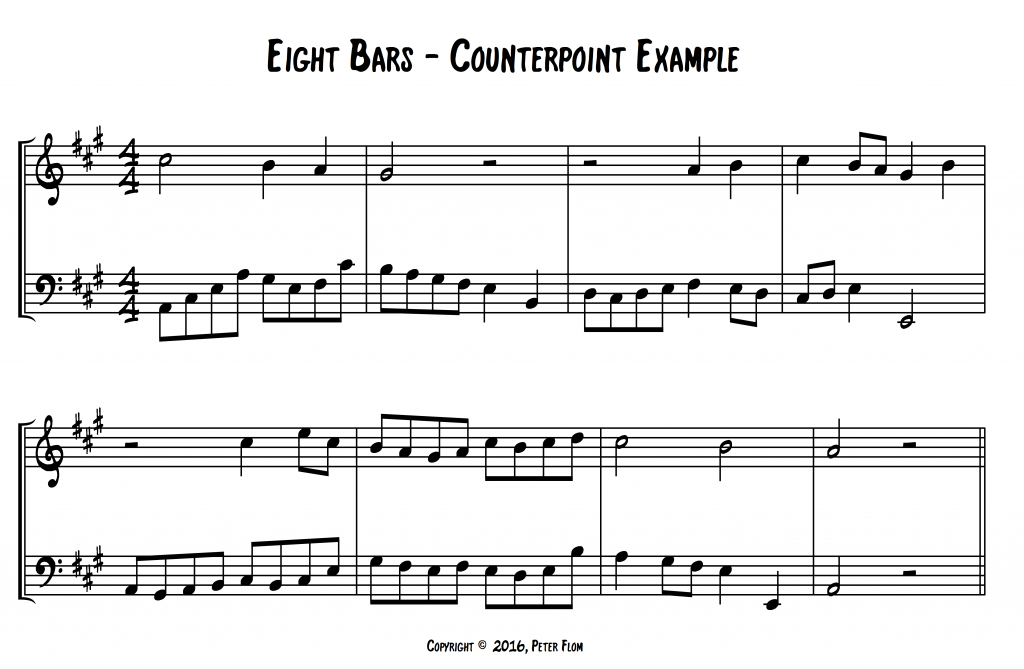
Now, before anyone wearing a powdered wig out there starts screaming, let me make it clear: This is not true baroque counterpoint. But I think it does a good job of showing how the melody relates to what will eventually become the accompaniment.
I basically wrote the melody out, then designed a second melody that tries to complement the first. When the top melody is active, the bottom plays less and vice versa. I also made sure every time the melodies play together that they are in intervals of thirds, sixths, fifths, or octaves.
To some it may be a boring exercise, but you’d be surprised how often it sparks inspiration! But we want to keep our music relevant, so let’s move on to the next idea.
+Read more on Flypaper: “The Anatomy of a Song — Crafting an Electro-Pop Song from Start to Finish”
Try a New Genre
I’ll admit it: This is a jazzy piece. And it will always sound jazzy to me, no matter what I do. However, it’s a very good exercise to arrange your song to a different genre, especially one you aren’t familiar with. I know that I am probably the least familiar with country and folk music, so I tried to see how this song can work as a bluesy up-tempo romp instead of a jazzy slow piano ballad.
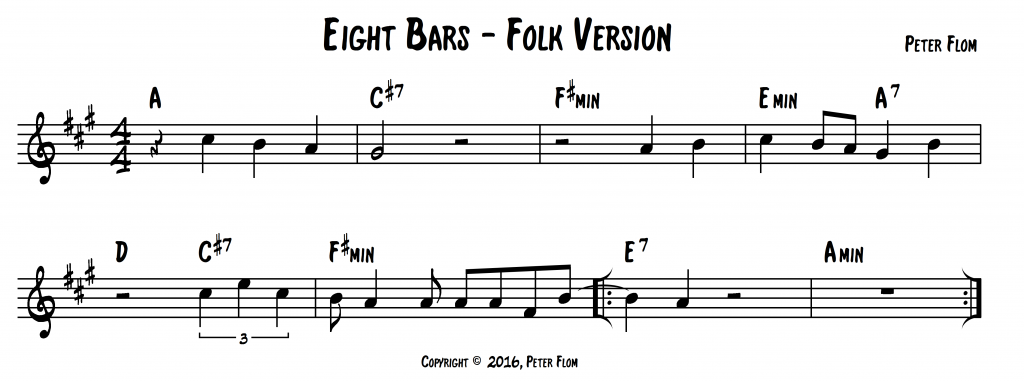
As you can see, I need to change the chords quite a bit! But that was the point. By forcing myself to simplify the chords and be more authentic to the genre, I heard this piece in a completely different way. Even if I don’t change the genre to country, I could use these chords over the same melody and totally surprise my listener.
But of course, doing this too often can cause your music to lack focus, or in some cases, you can get so excited about the possibilities that you forget to pick something. Which leads me to my last piece of advice…
Mix Ideas, Experiment, Decide
I liked the simpler harmony from the above example, but I really wanted to keep the stepwise chords from the original version. After trying a few different grooves with the original changes, I decided to change the feel to an uptempo funk sound. This is the end result:
This version is exactly the same as the lead sheet you saw at the beginning of this article, except that it’s played at a much faster tempo, and I decided to give the guitarist a solo during the vamp section in the last two bars.
I can honestly say that I wouldn’t have thought to take this song uptempo if I hadn’t used these methods first! But by experimenting with my song and forcing myself to look at it a different way, I ended up with eight bars I can really be proud to play for an audience. I encourage any songwriters out there to do the same!
